Lake Urmia; Resurrected Beauty of Iran
Lake Urmia or Orumiyeh Lake on the border of East and West Azerbaijan Provinces of Iran, is Iran’s largest inland water body (5,200 km2) and a UNESCO biosphere reserve. It was once the world’s 2nd largest hypersaline lake, before the dramatic shrinkage and drop in Lake Urmia water levels due to climatic and human influences. Counting as one of the most popular Urmia attractions, Lake Urmia is most conveniently reachable from city of Urmia, in West Azerbaijan.
After the generous rainfalls of March 2019, Orumiyeh Lake was miraculously revived, making it well worth to have an account of Lake Urmia before and after its close-to-death depletion and grand revival.
Home to exotic marine species and migrating birds, Orumiyeh Lake also prides scenic landscapes and a hundred rocky islands, not to mention a gracious host to ancient civilizations in the region.
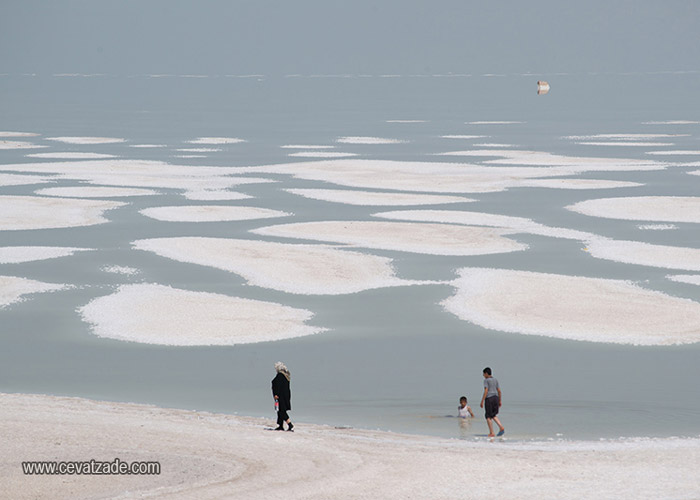
Photo by @Ahmet CEVATZADE on Flickr
As an Iran tour and travel agency, we invite you to check out our Iran travel packages:
>> Iran Tours 2020 & 2021 (Click Here)
#1 Geographical facts about Lake Urmia
Geographical facts about Lake Urmia : Located on the border of East and West Azerbaijan Provinces of Northwestern Iran, Lake Urmia is Iran’s largest lake and the world’s 2nd largest salt lake.
At its vastest, Lake Urmia measured 5,200 km2, at a length of 140 km, a width of 55 km, and a maximum depth of 16 m. However, in recent years Orumiyeh Lake shrunk to a catastrophic 10 percent of its original size, with 700 km2 in 2013, due to prolonged drought and water mismanagement by authorities. Fortunately, the heavy rainfalls of early 2019 and March 2019 brought the lake back to life.
The lake hosts 102 rocky islands, and is fed by 16 primary inflows of rivers such as Zarrineh-Rud and Aji-Chay, and frequent precipitation, typical of the climate of northwestern Iran and no outflows.
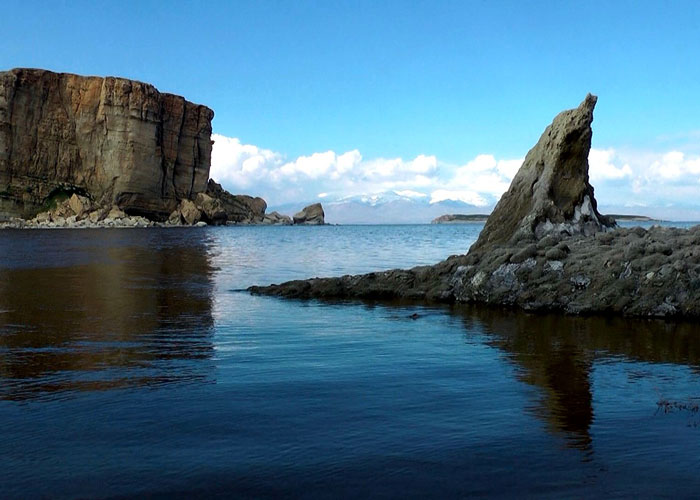
Photo by @tag-h Adrin on Flickr
#2 Ecological Importance of Orumiyeh Lake
Ecological Importance of Orumiyeh Lake : Lake Urmia is internationally registered as a protected area as a UNESCO Biosphere Reserve and a Ramsar site (since 1975). Orumiyeh Lake is also protected as a national park by the Iranian Department of Environment.
Boasting a remarkable biodiversity, Orumiyeh Lake hosts up to 226 species of birds, 27 species of amphibians and reptiles and 24 species of mammals (47 fossils have been recorded in the area), 62 species of archaebacteria and bacteria, 42 species of microfungi, 20 species of phytoplankton, 311 species of plants, etc.
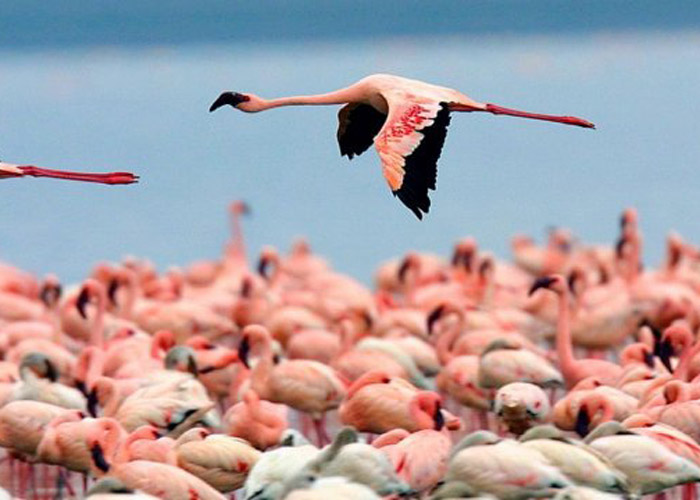
Around 10,000 flamingos are staying put at Urmia Lake and its vernal pools. (Photo Credit to Financial Tribune)
Perhaps the most prominent ecological feature of Lake Urmia is it hosting migrating birds in its 102 small rocky island, such as flamingos, pelicans, ibises, gulls, etc.
The recent dry spells resulted in the increased salinity of the lake, making it no more a habitat of fish species, but the Artemia, a food source of flamingos. At its driest, there were speculations of this species going extinct too.
Some accounts pointed the lake used to host 100,000 to 200,000 birds in winter every year before its drastic shrinkage. However, hopes are high that the revival of the lake will reverse the decline in recent years.
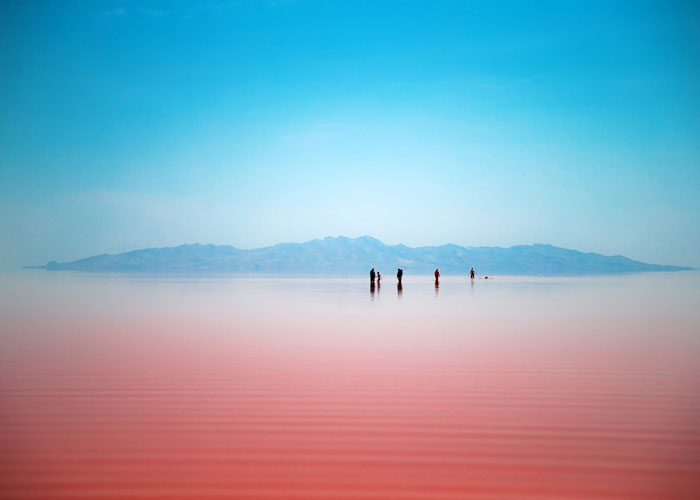
Certain climatic conditions produce a type of algae that periodically turns Lake Urmia bright red. (Photo by @Jo Gill on Pintrest)
#3 Lake Urmia Before and After
Lake Urmia Before and After and Lake Urmia Water Level : Orumiyeh Lake used to measure 5,200 km2, however, in recent years Orumiyeh Lake shrunk to a catastrophic 10 percent of its original size, with 700 km2 in 2013. Water volume of the lake dropped from 30 billion m2 in 1997 to 2.5 billion m2 in 2017.
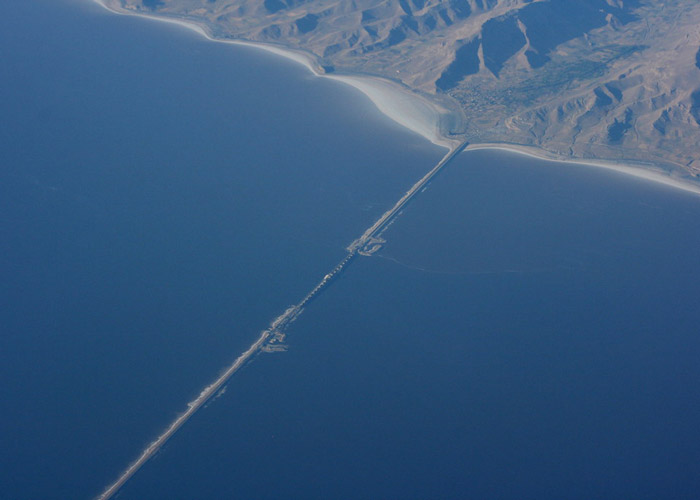
Bridge Crossing Lake Urmia (photo by @Javier Ortega Figueiral on Flickr)
In 2014, The Iranian government, during President Rouhani’s Administration, allocated hefty budgets (over 500 million dollars) for the first year of revival program with international aid. However, the restoration program could not affect significant improvements to Lake Urmia’s tenuous condition. Large budgets have annually been assigned to improve the agricultural and water management infrastructures around the region, ever since.
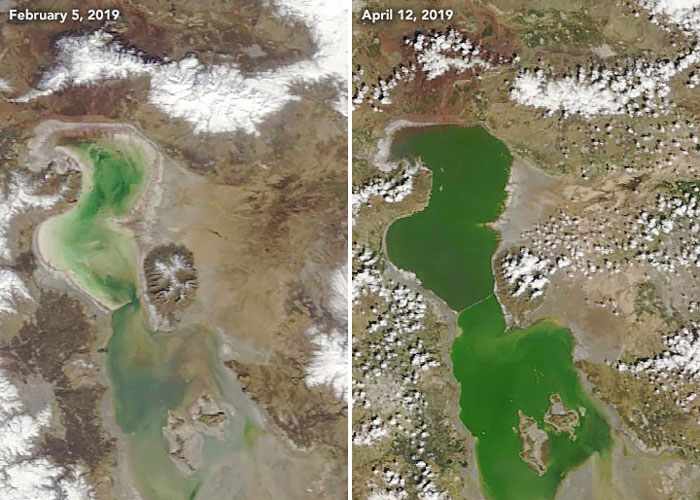
Revival Progress of Lake Urmia by NASA Earth Observatory
Reasons of the devastative shrinkage of the lake are cited as long drought periods and most importantly, irresponsible drilling of 40,000 wells on the lakes basins, construction of numerous dams on the inflowing rivers, in previous administrations mainly for agricultural purposes, and erecting a bridge across the lake to shorten traveling distance between Tabriz and Oroumiyeh cities aggravated the depletion of the lake.
Fortunately, rainfalls since Fall 2018 intensifying in March 2019, resurrected the lake to a surface area of 3,000 km2 and Orumiyeh Lake water level increasing by 59 centimeters compared to 2013, according to the governor (according to 13 April 2019 updates).

Recent heavy rainfalls in Iran hugely help the Lake Urmia revive.
#4 Attractions of Orumiyeh Lake
Attractions of Orumiyeh Lake : Lake Urmia offers its visitors the chance to entertain themselves with the inherent splendor of its nature. When Visiting Orumiyeh Lake, one can enjoy the following activities and landscapes:
- Bird Watching
- Boating and visiting the different islands of Orumiyeh Lake
- Photography
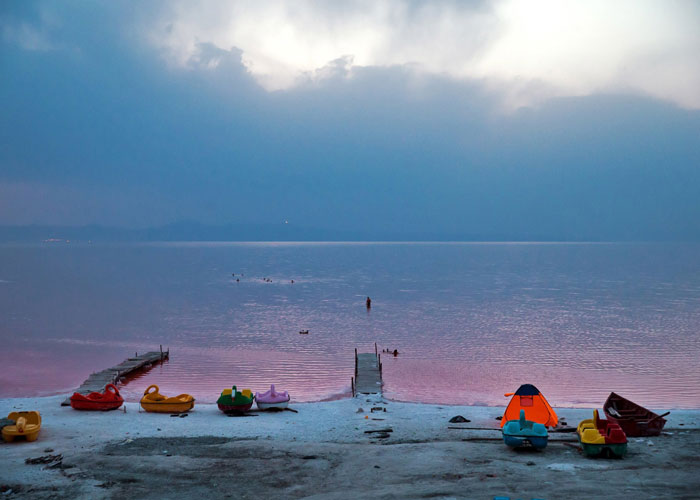
Photo by @Jo Gill on Pinterest
- Mud Therapy and Brine floating: The mud at the lake is rich with minerals such as chlorine, sulfate, sulfur, iodine, iron, and organic matter, that is popular to treat skin diseases, rheumatism, psychosomatic illness, pelvic inflammation, and menstrual disorders among others. Also due to high concentration of salt, people can float in the water without sinking, which can offer relaxing time.
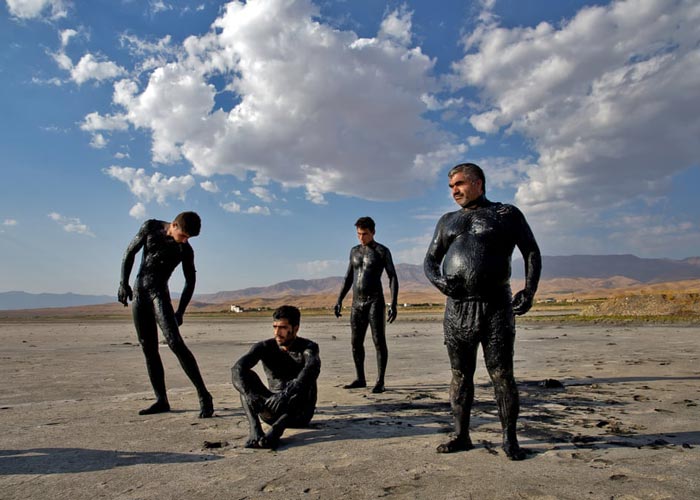
Mud Therapy (Photo by @Jo Gill on Pinterest)
- Mesmerizing landscapes : salt crystals and microorganisms of the lake create fantastic sceneries, especially at sunset
- Kazem Dashi Region on the west shore of the lake, which when Lake Urmia water level is high appears as a peninsula covered with Poppies, a refreshing view!
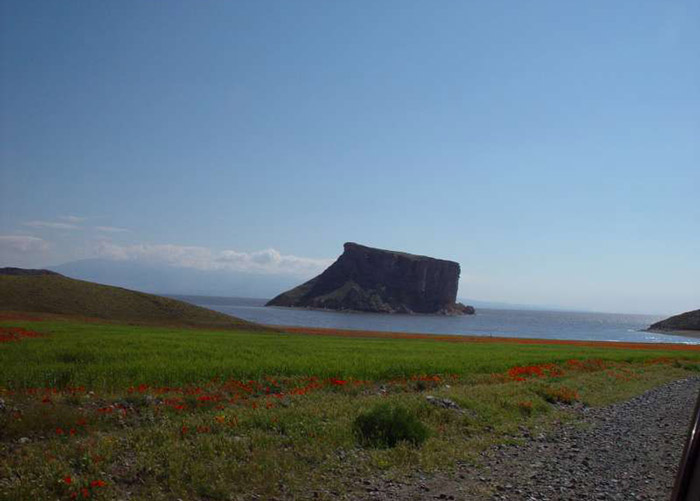
Photo by @urmiyephoto on Flickr
#5 History of Lake Urmia
History of Lake Urmia : Etymologically, the origin of Lake Urmia’s name can be of Urartian, or derived from Indu-Iranian “Urmya” meaning wavy. Locally, the lake is referred to in Persian as Daryāche-ye Orumiyeh . Its Old Persian name was Chichast, meaning “glittering” refereeing to the glittering nature of salt crystals covering the lake.
Lake Urmia region hides the archaeological treasures of the Neolithic Era and proof of settlement since 7,000 BC. Teppe Hasanlu, , Yanik Teppe and Haji Firouz Teppe are among the famous ancient settlements in the vicinity of Orumiyeh Lake. The lake was the center of the ancient Mannaean Kingdom. One of the early mentions of Lake Urmia is from Assyrian records of the 9th century BC (Shalmaneser III (858–824 BC).
The Battle of Urmia, during the Ottoman-Safavid Wars was fought near the lake in 1604.
Orumiyeh Lake has been home to Iranians, Assyrians, and Armenians in the past centuries.
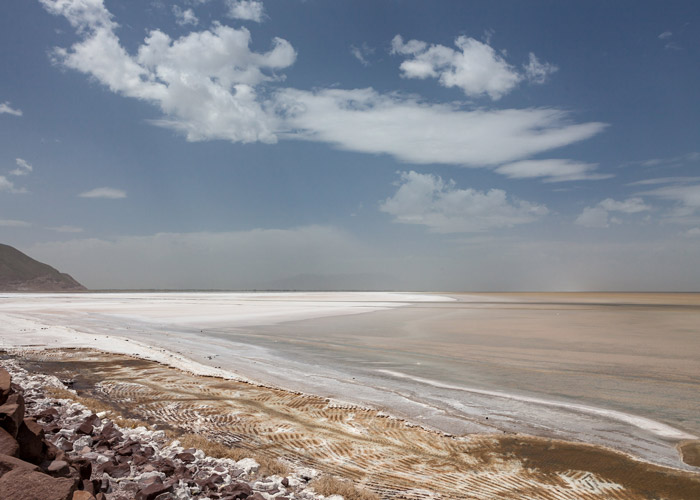
Photo by @Ninara on Flickr
How to Get to and Best Time to visit Lake Urmia:
Orumiyeh Lake is located between two Provinces of East and West Azerbaijan. and the best time to travel to the region is Spring and Summer a the weather is mild in the seasons.
1 Comment
Johnny · July 6, 2019 at 11:29 am
Thanks for the post. When is the best time for bird watching in Lake Urmia?